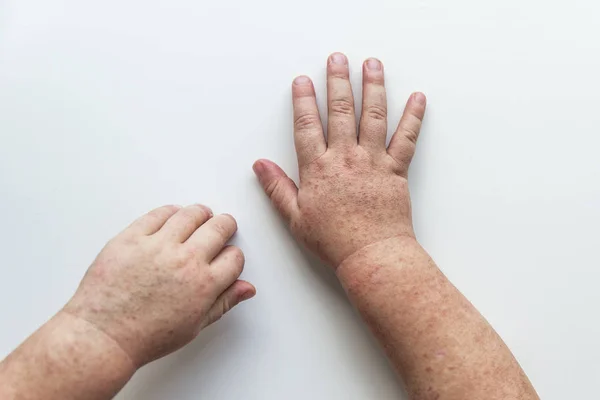

For patients who have more severe symptoms or who have developed complications such as ulcers on the fingertips, other medications can be used, such as topical nitrate cream or sildenafil ( Revatio®, Viagra®). They act by dilating (widening) blood vessels to increase blood flow to the fingers and toes.īlood pressure medications such as the calcium channel blockers amlodipine (Norvasc®, Twynsta®, Azor®, Prestalia®) and nifedipine (Adalat CC®, Procardia®, Adalat®), and angiotensin-receptor blockers are commonly used. There are several medications for treating RP.
#Son redhand plus
Stress plus cold exposure is an especially potent trigger for RP.
#Son redhand skin
Mottling (a bluish discoloration) of the skin of the arms and legs might also appear. Blood vessels supplying the skin of the ears, nose, face, knees, and nipples can also be affected, and the skin in these areas may become pale or bluish after exposure to cold. The feeling of true pain occurs more often in secondary RP and is caused by a prolonged loss of blood flow to the tissues.

An attack can cause discomfort, including a "pins and needles" feeling, aching, numbness, or clumsiness of the affected hand(s). The index, middle and ring fingers are most frequently involved, while the thumb is often not affected. Usually, an attack of RP begins in a single finger and then spreads to other fingers in both hands. The skin color changes noticeably and may become pale, or purple or blue. In most patients, the fingers (or toes) suddenly become cold as the blood vessels narrow. What are the symptoms of Raynaud’s phenomenon (RP) in children and adolescents? The digits can turn blue because less oxygen is being supplied to them, and eventually turn red when blood suddenly rushes back into the finger(s) after the episode is over. The lack of blood flow often results in a pale, or white, discoloration of the fingers or toes. These blood vessels “spasm” and constrict (narrow), which causes a decrease in blood flow and the changes in color. Raynaud’s phenomenon in children and adolescents is caused by overly sensitive blood vessels in the fingers and toes that are more affected by cold and stress. What causes Raynaud’s phenomenon (RP) in children and adolescents?


 0 kommentar(er)
0 kommentar(er)
